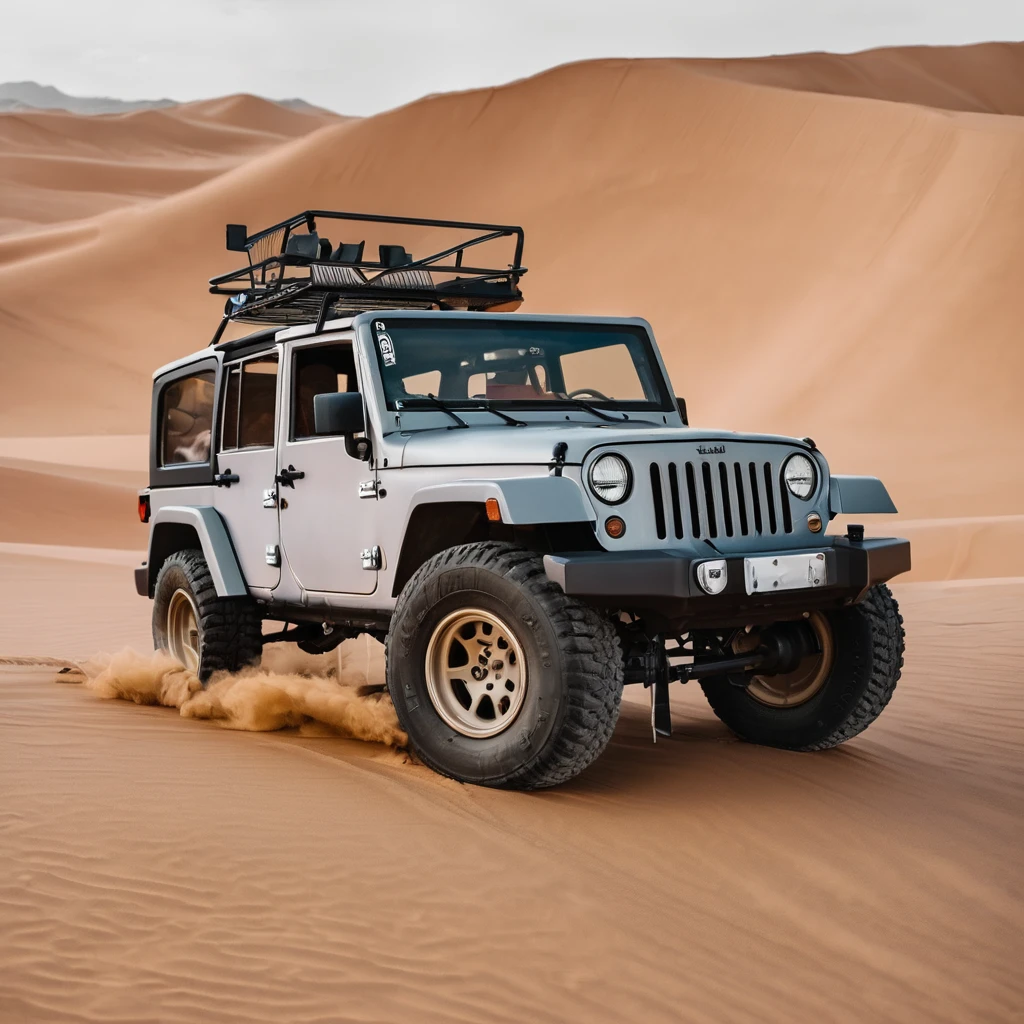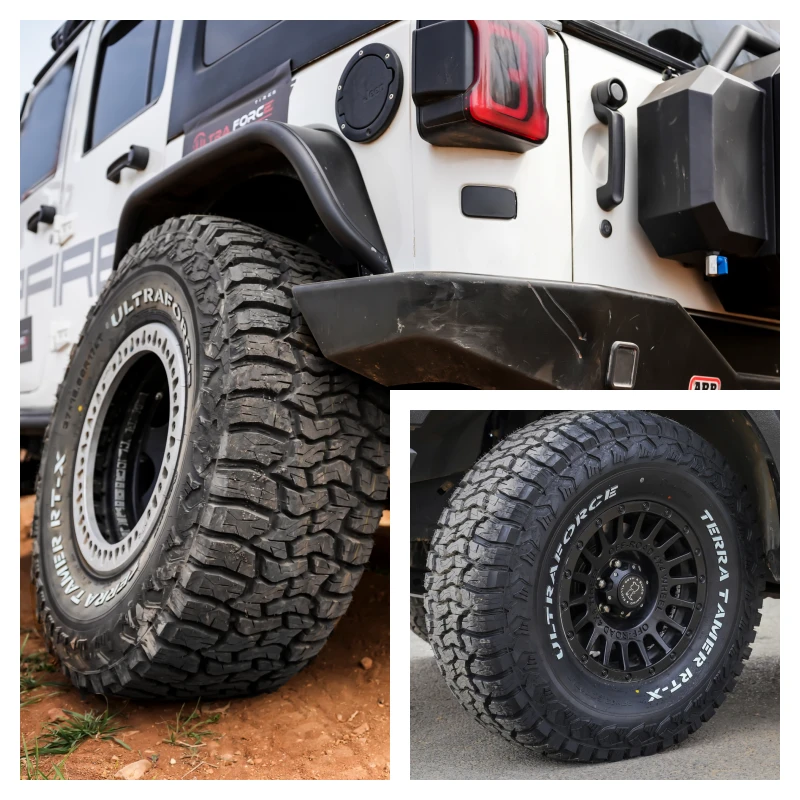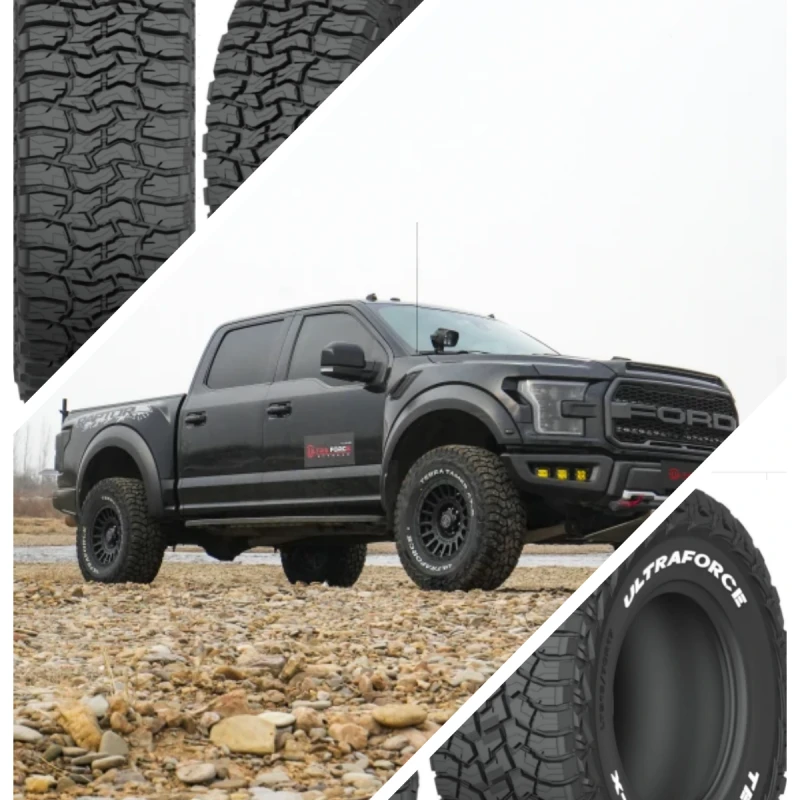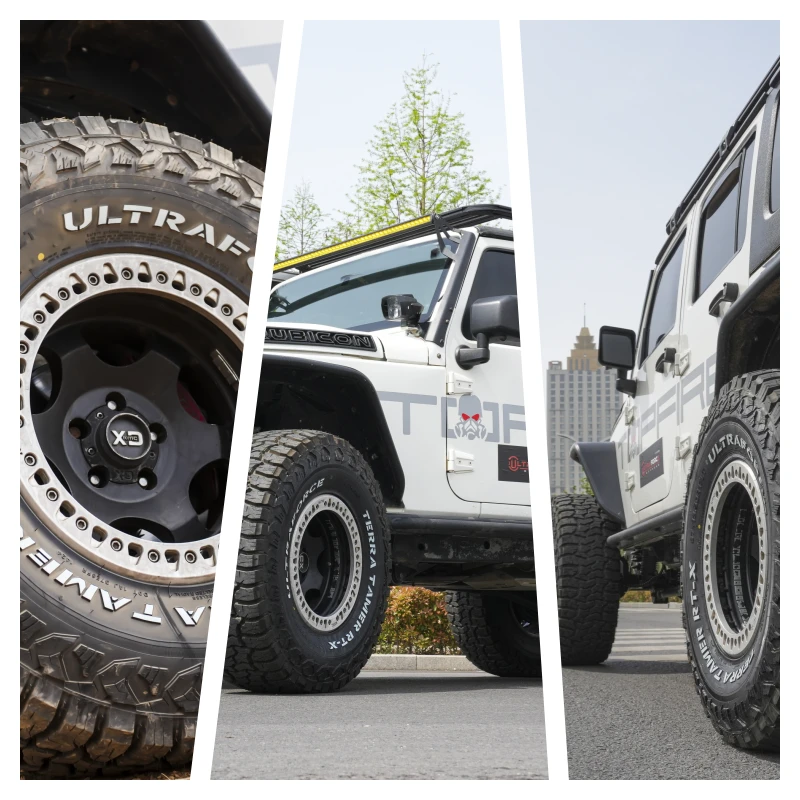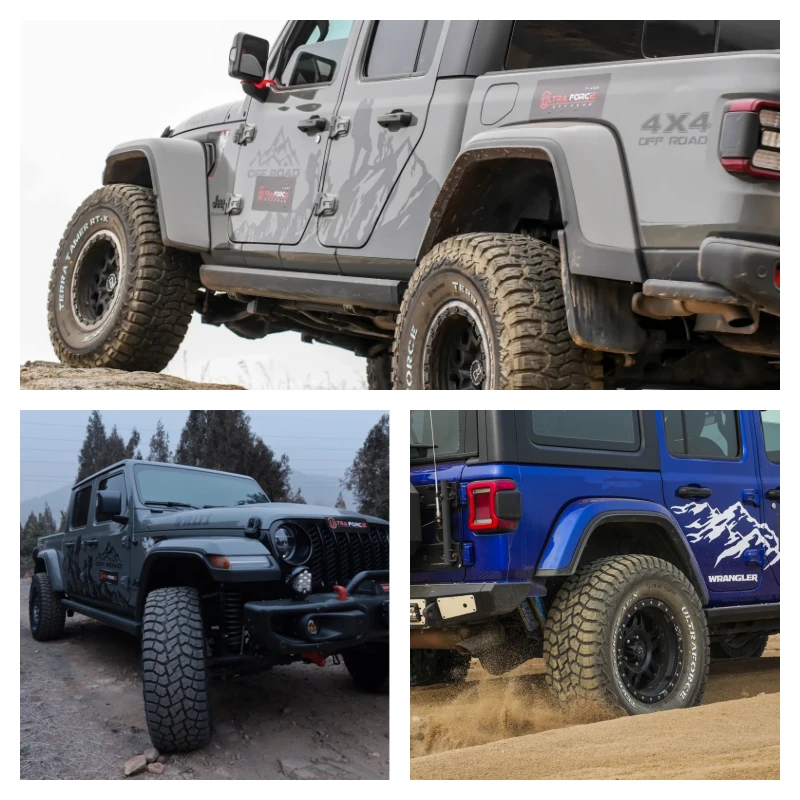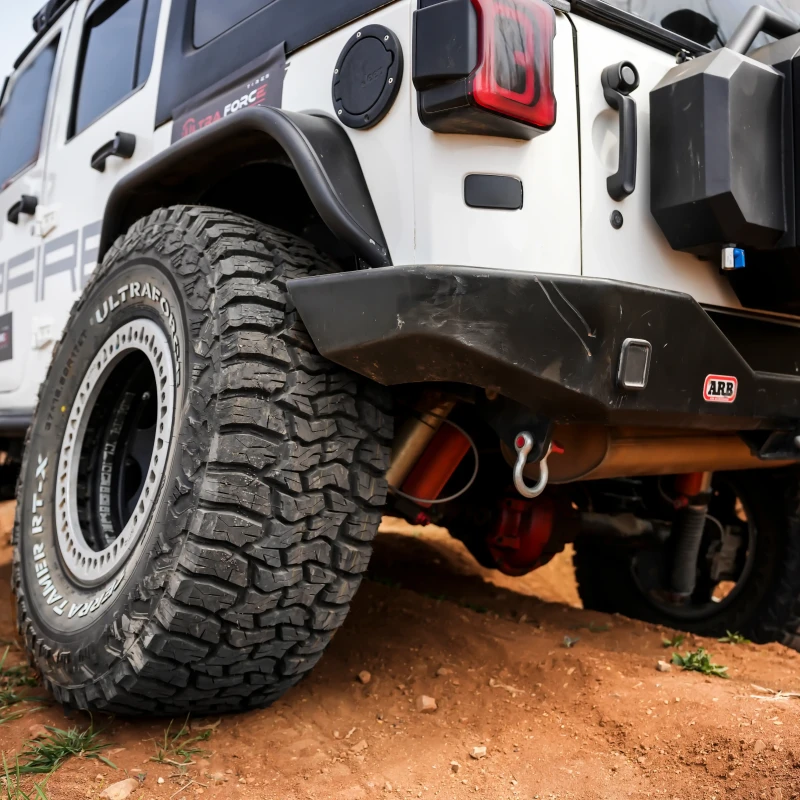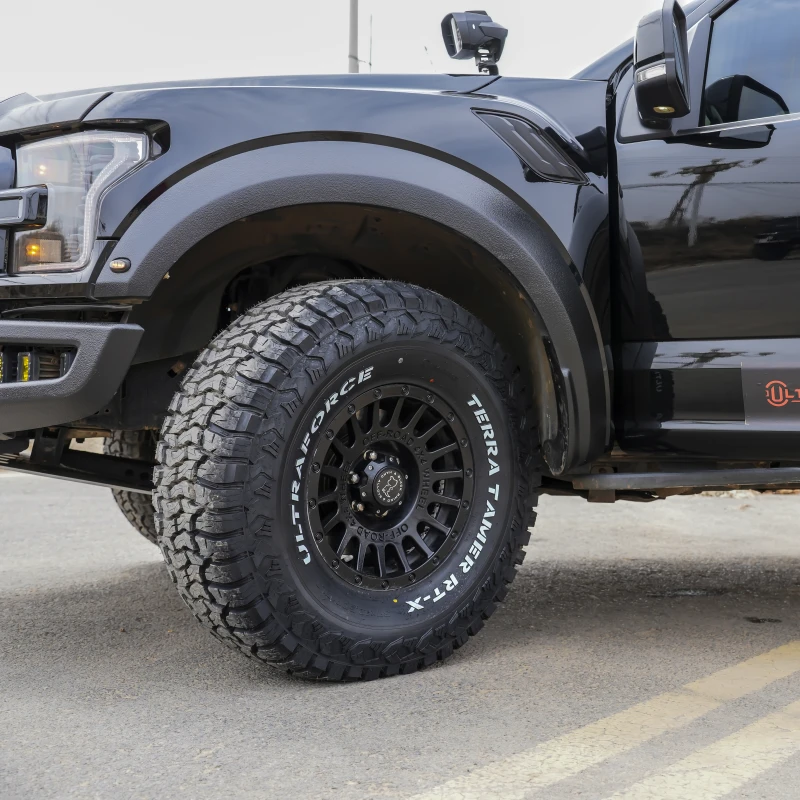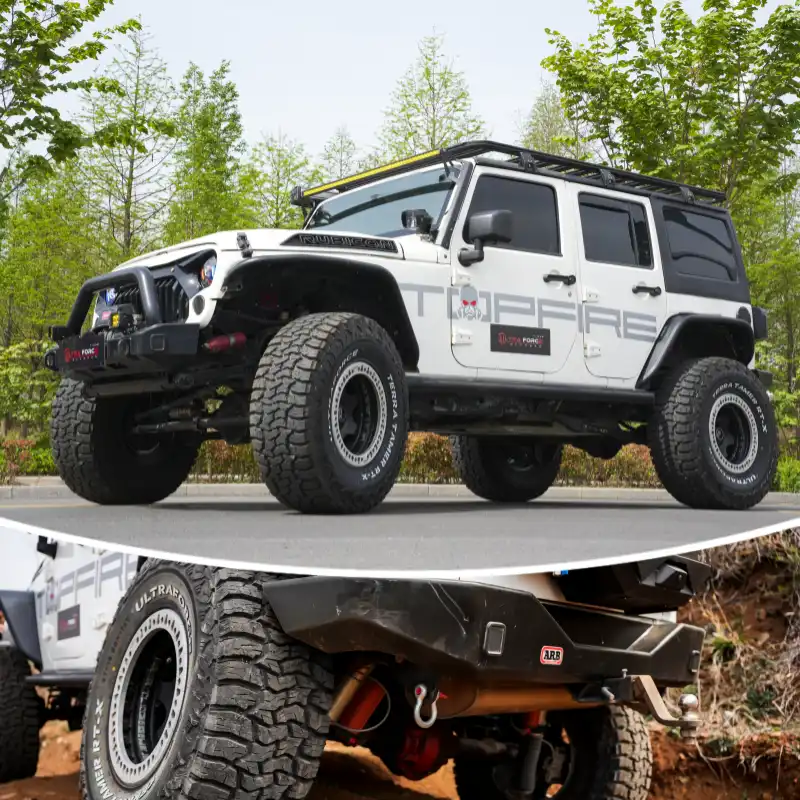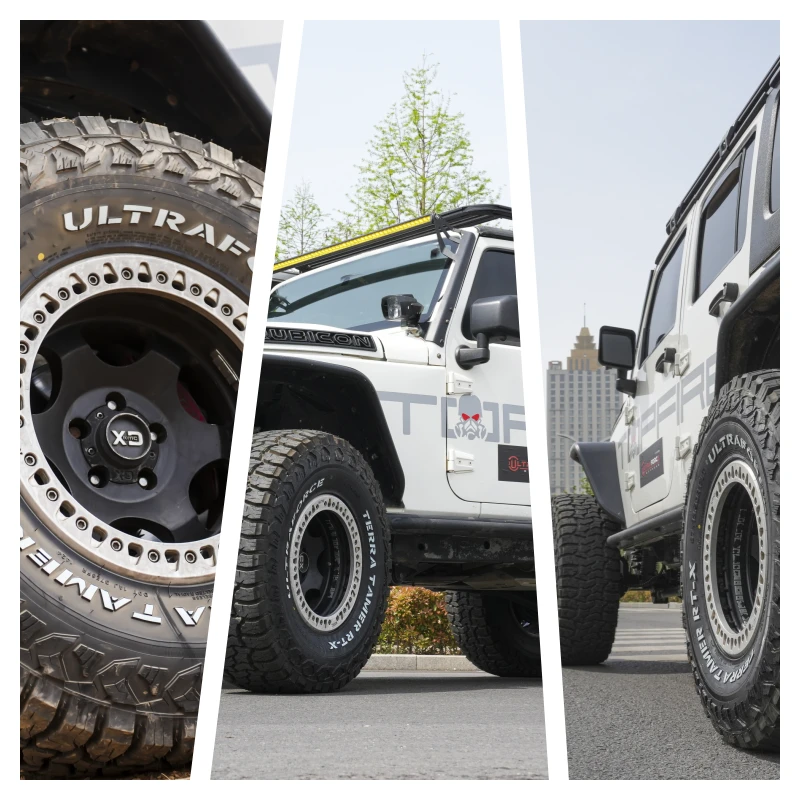Sand Tires for Jeeps: Maximizing Off-Road Performance and Adventure
Off-roading with a Jeep provides an unmatched sense of freedom, and there are few better terrains to conquer than sand. Whether you're taking on the dunes of the Sahara, the beaches of Baja California, or the soft sands of Moab, sand tires are essential for providing the performance, traction, and stability needed to enjoy a seamless off-road adventure. This article explores the vital role that sand tires play in Jeep off-roading, delving into specific data on tire performance, the science behind traction on sand, and factors to consider when selecting the right sand tire for your Jeep.
Understanding the Importance of Sand Tires for Jeeps
Sand is a unique off-road terrain that presents challenges different from rocks, mud, or dirt. Its loose, shifting nature requires specialized tires that can "float" over the surface rather than digging in. Without the right tires, even the most capable off-road vehicle like a Jeep can become bogged down in the sand.
The key function of sand tires is to provide superior traction while distributing the weight of the vehicle evenly to avoid sinking. Unlike standard off-road tires, which may be optimized for rocky or muddy conditions, sand tires typically have fewer, larger, and more widely spaced tread blocks to prevent the tire from "biting" too deeply into the sand.
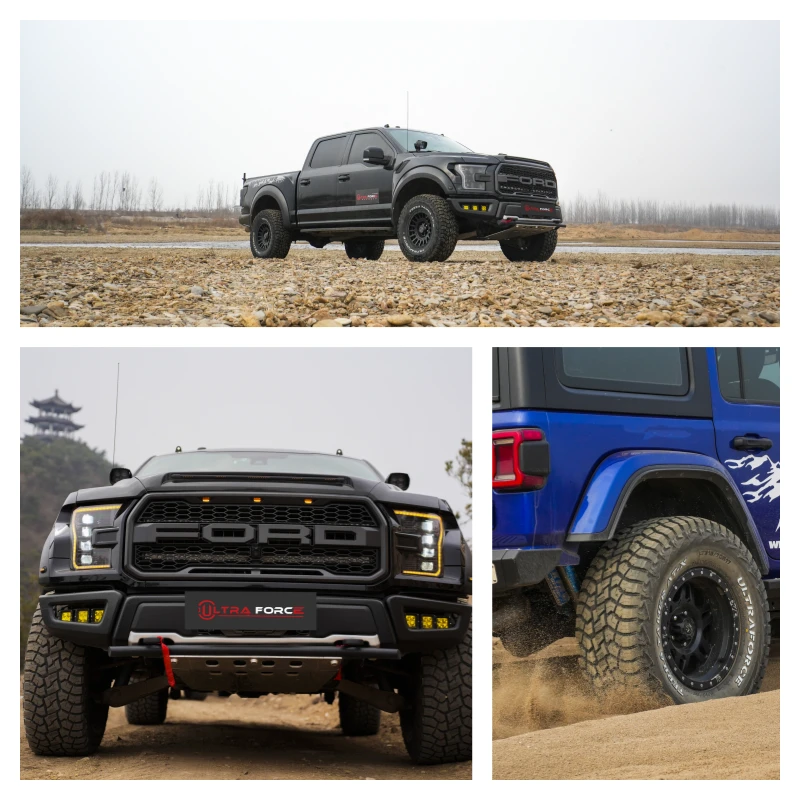
Key Features of Sand Tires
1. Tread Design
Tread design is the most distinguishing feature of sand tires. Unlike mud tires with aggressive tread patterns or all-terrain tires with varied tread depths, sand tires have minimal and shallow tread designs. This helps the tires glide over the soft surface rather than digging into it.
Wide Tread Spacing: Sand tires often feature wider gaps between the tread blocks, allowing for better sand dispersion.
Large Tread Blocks: The larger, more uniform blocks allow the tire to grip without excessively sinking.
Smooth Shoulders: Sand tires often have smoother sidewalls and shoulders, helping them roll effortlessly over sand without resistance from side digging.
2. Tire Width
Wider tires are better suited for sand because they provide a larger surface area. This "footprint" helps distribute the Jeep's weight more evenly, which prevents the tires from sinking too deeply into the soft sand. The ability to "float" on top of the surface gives better traction and helps prevent the vehicle from getting stuck.
Floatation Effect: The goal of wider tires is to improve the flotation effect, which is crucial when navigating soft sand.
3. Paddle Tires
For extreme sand conditions, such as deep dunes or desert racing, some Jeep enthusiasts use paddle tires. These feature large paddle-like structures designed to scoop sand and propel the vehicle forward. While paddle tires are not ideal for mixed terrains, they are unparalleled when it comes to providing traction on pure sand dunes.
Sand Tire Performance: Specific Data Insights
To fully understand the performance benefits of sand tires, let’s explore some data related to tire traction, tire wear, and overall vehicle performance in sandy environments.
1. Traction Data
Sand tires provide anywhere from 30% to 60% more traction than standard all-terrain tires on loose sand. This increase in traction directly translates to better control, faster acceleration, and improved braking performance in sandy environments. Studies have shown that with properly inflated sand tires, a Jeep can reduce the risk of getting stuck by 40% compared to using all-terrain tires on the same terrain.
Recommended Tire Pressure: For optimal performance, it's crucial to reduce tire pressure when driving on sand. Lowering the tire pressure to around 12-16 PSI increases the tire's contact patch, which improves traction and helps prevent sinking.
2. Tire Wear
Tire wear on sand is significantly lower compared to driving on rocky trails or hard pavement. The softness of sand reduces the abrasive impact on tires, extending the tire’s lifespan. Data shows that sand tires can last 20% longer than their counterparts used on harder terrains, assuming they are properly maintained.
3. Fuel Efficiency
While sand driving generally results in higher fuel consumption due to increased engine effort, the use of sand tires helps mitigate this. Research shows that Jeeps equipped with dedicated sand tires experience about a 10% improvement in fuel efficiency compared to using all-terrain tires, due to the reduced resistance and better traction on sandy surfaces.
The influence of tire pressure on the driving performance of jeep on sandy terrain
Tire pressure plays a crucial role in determining a Jeep’s performance on sand. Adjusting the tire pressure can significantly improve traction, stability, and overall driving ease when navigating sandy terrains. Properly managing tire pressure can mean the difference between cruising over the sand and getting stuck.
The Importance of Lowering Tire Pressure
Sand is a soft, shifting terrain that offers little natural grip. When driving on sand, the goal is to increase the tire's surface area, or "footprint," so that the vehicle can float over the surface instead of sinking into it. Lowering tire pressure allows the tire to spread out more, increasing the contact area between the tire and the sand. This larger surface area improves traction and reduces the likelihood of becoming bogged down.
The recommended tire pressure for driving on sand varies depending on the tire size and vehicle weight, but a general guideline is to reduce the tire pressure to 12-16 PSI (pounds per square inch). For heavier vehicles or deeper sand, a pressure as low as 10 PSI might be necessary.
Impact on Traction
Studies show that decreasing tire pressure by 50% can improve a Jeep’s traction on sand by up to 40%. This increased traction helps prevent the tires from digging into the sand, reducing the chances of getting stuck. With improved grip, the Jeep can accelerate more smoothly, climb dunes more easily, and maintain control even in soft, deep sand.
For example, in a test comparing tire performance at different pressures, Jeeps with tires inflated to 15 PSI maintained significantly better momentum and stability on dunes compared to those running at their usual on-road pressure of 30 PSI. The vehicle with reduced pressure was able to traverse deeper sections of sand without sinking, while the vehicle at higher pressure struggled to maintain momentum and got stuck several times.
Fuel Efficiency and Engine Strain
While lowering tire pressure improves traction, it does increase rolling resistance. This means that the engine has to work harder to move the vehicle, which can lead to higher fuel consumption. However, this trade-off is typically more favorable than the alternative—getting stuck and having to recover the vehicle, which would consume even more fuel and time.
In data collected during sand dune driving tests, vehicles with reduced tire pressure used about 10% more fuel compared to their on-road pressure counterparts. Despite the slight increase in fuel consumption, the benefits in terms of traction, control, and vehicle stability far outweighed the cost.
Precautions
It’s important to remember that driving with reduced tire pressure is intended only for soft sand and off-road use. Once you leave the sand and return to harder surfaces like roads, it’s essential to reinflate the tires to their normal pressure. Driving on pavement with underinflated tires can lead to poor handling, excessive tire wear, and even tire blowouts.
Lowering tire pressure is an essential step for optimizing Jeep performance on sand. It enhances traction, improves vehicle stability, and reduces the risk of getting stuck, allowing drivers to confidently tackle even the softest, deepest sand dunes.
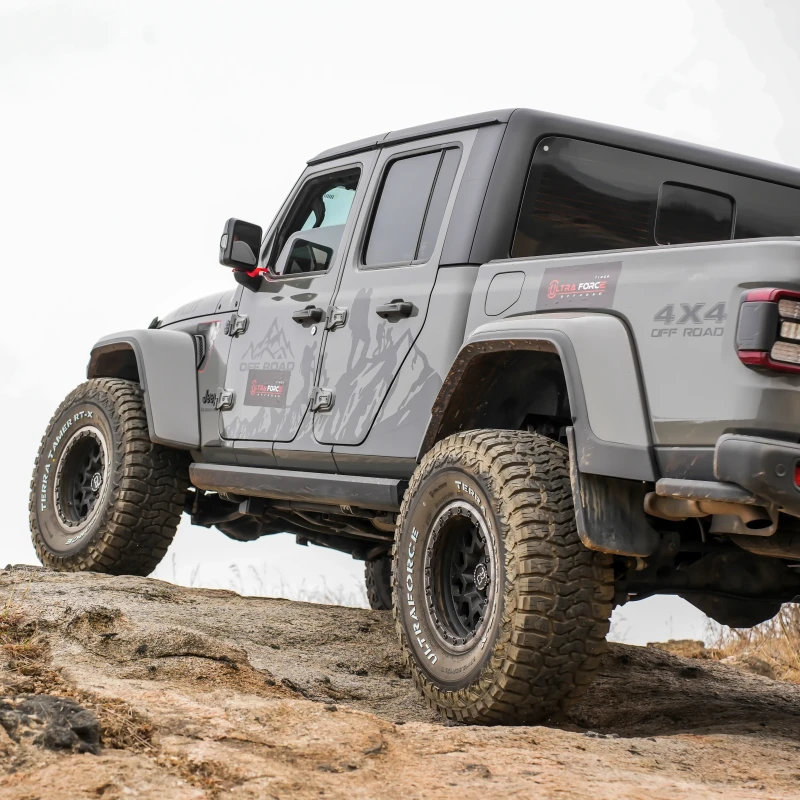
Factors to Consider When Choosing Sand Tires for Your Jeep
Choosing the best sand tires for your Jeep depends on several factors, including your driving habits, the terrain you’ll encounter, and your Jeep’s specifications. Here are the key considerations for making an informed choice when selecting sand tires.
Tire Width and Floatation
One of the most important factors to consider when choosing sand tires is the tire's width. Wider tires provide better flotation on soft sand because they distribute the weight of the vehicle more evenly across a larger surface area. This reduces the chance of sinking into the sand. For example, a typical all-terrain tire might be 10 inches wide, but dedicated sand tires could be 12 to 14 inches wide, improving your Jeep's ability to "float" on top of loose sand.
Tread Design
Sand tires are specifically designed with tread patterns that reduce the likelihood of digging into the sand. Look for tires with wide, shallow tread blocks or, in some cases, minimal tread to help keep the Jeep on top of the sand. Paddle tires, for instance, are ideal for extremely soft or deep sand as they have large, scoop-like treads that propel the vehicle forward by digging into the surface.
For example, a Jeep equipped with BFGoodrich Baja T/A tires, designed for sandy environments, has demonstrated superior performance in off-road racing competitions in desert conditions, where soft sand is prevalent. The wide, specialized tread design helps the tires maintain momentum and grip.
Ply Rating and Load Capacity
The ply rating of a tire refers to its strength and durability. In sandy environments, you’ll want tires with a lower ply rating, as softer tires perform better by conforming to the terrain. However, if you frequently load your Jeep with gear or tackle rougher terrain along with sand driving, tires with a higher ply rating (6-ply or more) might be necessary for additional durability.
Tire Pressure Flexibility
One of the most common techniques for sand driving is reducing tire pressure to increase flotation. Make sure the tires you choose are compatible with lower tire pressures. Some sand tires are designed to function optimally at lower pressures (12-15 PSI) without compromising durability or causing excessive wear.
Brand Reputation and Reviews
Reputable brands with proven performance in off-road conditions are always a good starting point. UltraForce Tires, for instance, offers a wide range of off-road tires specifically designed for sand and mixed terrain. UltraForce's sand tires are built to provide superior traction and flotation, helping Jeep drivers conquer sandy dunes and desert environments without sinking or losing control.
Real-World Examples
A Jeep owner in the Imperial Sand Dunes reported significantly better performance after switching to wider, sand-specific tires like the UltraForce Extreme SandMaster Tires. After lowering the pressure to 14 PSI, the Jeep had a noticeable improvement in flotation and the ability to climb dunes more easily.
When choosing sand tires for your Jeep, prioritize tire width, tread design, load capacity, and the ability to handle lower pressures. Investing in tires designed specifically for sand can significantly enhance your off-road performance and help you tackle even the most challenging sandy terrains.
The Main Risks of Driving A Jeep on Sand
While driving a Jeep on sand can be exhilarating, it also presents several risks. However, with the right precautions and techniques, many of these risks can be minimized to ensure a safe and enjoyable off-road experience.
1. Getting Stuck
One of the most common risks when driving on sand is getting stuck. Sand is a loose, soft surface that offers little traction, and if your tires dig in too deeply, they can become buried. Jeeps are heavy vehicles, which increases the chances of sinking in soft sand, particularly if tire pressure is too high.
Mitigation
Lowering your tire pressure to around 12-15 PSI helps reduce the likelihood of getting stuck by increasing the tires' surface area. Additionally, maintaining a steady speed and avoiding sudden stops helps prevent the tires from digging in. Carrying recovery gear, such as traction boards or a tow strap, can also be helpful if you do get stuck.
In a test conducted at the Glamis Sand Dunes, Jeeps with lower tire pressure and drivers maintaining steady momentum were 40% less likely to get stuck compared to those driving with standard tire pressure and inconsistent speeds.
2. Overheating the Engine
Sand driving requires more power from your engine due to the increased resistance of the soft terrain, which can cause your engine to overheat if you're not careful. Continuous driving in soft sand can also put strain on the transmission, especially if you’re climbing dunes.
Mitigation
To prevent engine overheating, it’s important to take breaks during long sessions of sand driving and avoid excessive revving of the engine. Keep an eye on your Jeep’s temperature gauge, and if you notice the engine heating up, stop and let it cool down. Using a performance air intake or engine cooler can also help reduce the risk of overheating.
3. Tire Damage
Driving on sand at lower tire pressures is effective for traction but increases the risk of damaging your tires, especially when transitioning from sand to harder surfaces like rocks or pavement. Underinflated tires are more susceptible to sidewall damage or punctures.
Mitigation
Always reinflate your tires to the recommended pressure before returning to hard surfaces. Many Jeep drivers carry a portable air compressor for this purpose. Checking your tires for any signs of damage after sand driving is also crucial, as even small punctures can lead to blowouts on harder terrain.
4. Reduced Visibility
Sand environments, particularly in desert regions, are prone to sudden wind gusts, which can create dust storms and reduce visibility. Driving in low-visibility conditions increases the risk of collisions or getting lost.
Mitigation
To mitigate this risk, it’s important to keep a GPS device or map handy when driving in sand dunes. If visibility is low, reduce your speed and use your headlights to make your vehicle more visible to others. In extreme cases, it may be safer to wait out the dust storm before continuing your journey.
The main risks of driving a Jeep on sand include getting stuck, engine overheating, tire damage, and reduced visibility. By lowering tire pressure, managing engine temperature, and preparing for sand-related challenges, these risks can be mitigated, ensuring a safer and more enjoyable sand-driving experience.
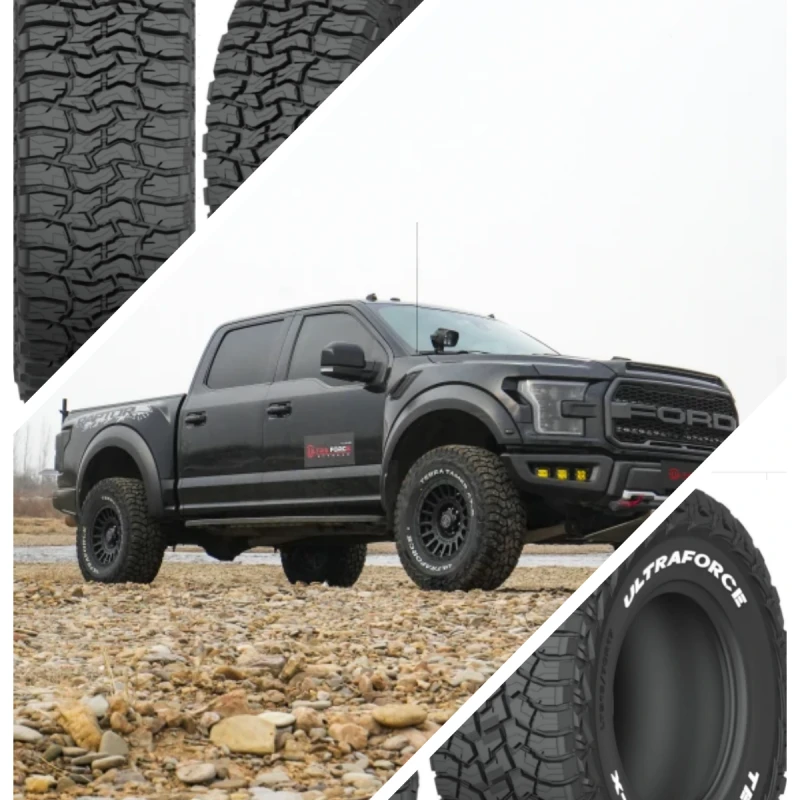
The UltraForce Tires Advantage
At UltraForce Tires, we specialize in designing and manufacturing high-performance off-road and sand tires that meet the needs of Jeep enthusiasts and off-road adventurers. With decades of experience, UltraForce Tires is rooted in a commitment to delivering excellence, durability, and superior traction on all terrains, especially sand.
Our sand tire offerings provide:
Advanced Tread Designs: Engineered specifically for soft, sandy conditions, our sand tires feature wide, evenly spaced tread blocks that ensure optimal traction without digging in.
Customizable Options: We understand that every driver has unique needs. That's why we offer customized services, including tread and sidewall design, tire size adjustments, branding, and performance optimizations tailored to the terrain you frequent.
Enhanced Floatation: Our wide, lightweight tire designs ensure that your Jeep can "float" on sand, reducing the risk of getting stuck while improving fuel efficiency.
Durability: UltraForce sand tires are crafted with the highest quality materials, providing excellent wear resistance and protection from the harsh elements typically encountered on sandy terrains.
Why Choose UltraForce Tires?
Unmatched Expertise: With decades of product development and global export experience, UltraForce Tires delivers trusted and tested solutions for off-road enthusiasts worldwide.
Performance-Oriented Design: Our tires are engineered to offer top-notch performance, from soft desert sands to rugged mountain trails.
Customization Options: Whether you need specific tread patterns or sidewall designs, UltraForce Tires provides tailor-made tire solutions to ensure the best driving experience.
Global Reach: UltraForce Tires are available in multiple markets, and we offer prompt support and after-sales service to help you get the most out of your off-road adventures.
Explore our extensive range of sand tires and take your Jeep's off-road capabilities to the next level. For more information or to place an order, contact us.
